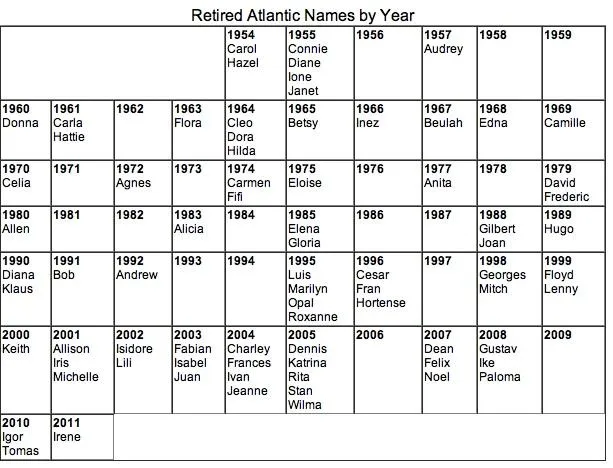Here’s How Hurricane Naming Works
Who gets to chose hurricane names, and how do they do it?
/https://tf-cmsv2-smithsonianmag-media.s3.amazonaws.com/filer/20120829112007emily.jpg)
Hazel, Fifi, Cleao, Igor and Cesar may sound like cute hamster names or entries in the 1954 book of trending baby names, but they all share one commonality: they’re destructive hurricanes of yesteryear. But who gets to chose these names? And are these hurricane name-dealers following a prescribed scientific criteria, or just drawing names of their dogs and kids out of a hat?
For several hundred years, hurricanes were named after saints, in a slightly gruesome reminder of divine justice. On July 26, 1825, Hurricane Santa Ana slammed through Puerto Rico with exceptional violence, for example. But by the end of the 19th century, some meteorologists began naming hurricanes after women. (No evidence exists to show whether or not those women were past girlfriends.)
In 1953, the U.S. abandoned a misguided plan to name storms by a phonetic alphabet (which included Hurricanes Dog and Love) and instead officially adopted the female storm-naming system. The Guardian picks up the story from 1978:
However the idea that women might share the capricious, changeable temperament of storms caused affront, so from 1979 storms were named alternately after girls and boys. The revamped Atlantic list includes a sprinkling of Spanish and French names to better represent the cultures being pummelled.
Today, an international committee of the World Meteorological Organization follows a “strict procedure” for naming hurricanes and topical storms, according to NOAA, based on an alternating six-year system. The Guardian elaborates:
Creating a new list of girls’ names each year obviously taxed the imagination of (male) forecasters, and Atlantic hurricane names came to be picked from a rotating list.
However, if a storm is so deadly or costly—think Katrina—that future use of its name would be inappropriate, the committee strikes its name from the list and selects another to replace it. If an 11th hurricane had occurred in 2011, it would have been named Katia.
But some hurricane names have gone out of circulation without any particular reason being cited. Before 1979, when the first permanent six-year storm name list began, some storm names were simply dropped out of use. For example, in 1966, “Fern” was substituted for “Frieda.”
Do you bear a retired hurricane name? Here’s the partial list:

More from Smithsonian.com:
Watch Hurricane Isaac Grow and Slam Into Louisiana
The Great New England Hurricane of 1938
/https://tf-cmsv2-smithsonianmag-media.s3.amazonaws.com/accounts/headshot/Rachel-Nuwer-240.jpg)
/https://tf-cmsv2-smithsonianmag-media.s3.amazonaws.com/accounts/headshot/Rachel-Nuwer-240.jpg)